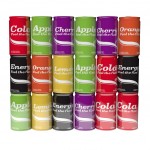
Dental erosion defined as, the irreversible loss of tooth tissue by chemical processes not involving bacteria is considered to be increasing. It has been estimated to have a prevalence of about 30% in adolescents so early diagnosis and understanding risk factors is important.
The aim of this review is to summarise the literature on the effects of dietary acids and habits on dental erosion in the permanent dentition of 10- to 19-year-old adolescents
Methods
Searches were conducted in the Cochrane, Medline, CINHAL and Embase databases with no date restrictions. Observational cross-sectional and cohort studies in 10-19-year-olds investigating dental erosion and dietary acids or habits and published in English peer-reviewed journal were considered. Two reviewers independently screened studies with 3 reviewers extracting data. Two reviewers assessed study quality using the Newcastle-Ottawa Scale (NOS).
Results
- 52 studies (5 cohorts, 3 case controlled and 44 cross-sectional) were included.
- Studies were undertaken in 26 countries.
- The Tooth Wear Index (TWI) was used in 14 studies, 11 studies used the Basic Erosive Wear Examination (BEWE), and 9 the O’Sullivan.
- 46 studies used self-administered questionnaires, 5 structured interview and one a 24-hour food recall.
- 12 studies were considered to be at low risk of bias, 38 at medium risk and 2 at high risk of bias.
Beverages
- In 22 of 42 (52%) studies there was a significantly positive association with carbonated drinks
- 7of 25 (28%) studies of sports/energy drinks reported a significantly positive association
- 12 of 36 (33%) studies indicated that a higher intake of fruit juice significantly increased erosion.
- 11 studies examining types of tea reported no significant link with 7 reporting a significant increase in risk while one reported a protective effect of tea.
- 2 of 3 cohort studies considering milk intake reported that a higher frequency of intake could significantly reduce the progression of existing erosive lesions.
Food
- 20 studies assessed citrus fruits (lemons, oranges, and grapefruit) with 6 (30%) demonstrating a significant positive relationship.
- 28 studies assessed other fruits including apples, grapes, mangoes with only seven (25%) suggesting a significant positive relationship.
- 2 cohort studies showed a significantly positive association for erosion with sour vegetable sand sour candies.
- 4 cross-sectional studies observed a significant increase in erosion with frequent consumption of sour candies.
- One 3-year study found a significantly negatively associated with erosion for yoghurt/dairy products.
- 20 cross-sectional studies assessed vinegar, pickles, and/or yoghurt with 2 studies finding a significant positive association for both vinegar and pickles and one study a positive association for yoghurt.
- 6 studies reported a significant directly proportional relationship between ketchup, mayonnaise, sour dip, and erosion.
Dietary habits
- 3 cohort and 33 cross-sectional studies considered dietary habits
- One cohort study reported that individuals with a high progression of tooth erosion had a statistically significant higher intake of drinks between meals and a ‘retaining’ drinking technique.
- 60% of cross-sectional studies found no association with swishing, retaining, or swallowing drinks immediately and erosion.
Conclusions
The authors concluded: –
Although results were not consistent between cohort and cross-sectional studies, this review suggests certain dietary risk factors may contribute to dental erosion in adolescents. There is a need for more high-quality cohort studies to establish more conclusive evidence on the role of dietary acids and habits on dental erosion.
Comments
The reviewers have searched a good range of databases although restricting the inclusions to publications in peer reviewed English language journals may have excluded some relevant papers. All but 3 of the included studies were cross-sectional in nature so active and past erosion cannot be distinguished. Most studies used food frequency questionnaires or brief dietary assessments, which may result in recall bias and an individuals’ current diet may not be representative of previous diet and diet also varies with seasons and day of the week leading to inaccuracies. Multiple day or repeated dietary assessment may be more accurate, but two of the 3 cohort studies only undertook dietary assessment on a single occasion. A number of different indicies were used to assess toothwear and some may overestimate tooth wear. In addition, there can be diagnostic challenges to using these indices under field conditions. While a frequency score was calculated for 32 potential risk factors with the highest being carbonated drinks, confectionary, and a swishing drinking habit/retaining drinks these should be interpreted cautiously as they do not reflect the importance merely how often they are mentioned in the included papers. So while the available evidence suggest that some dietary factors may be linked with dental erosion high quality prospective studies are needed to help establish better quality evidence.
Links
Primary Paper
Chan AS, Tran TTK, Hsu YH, Liu SYS, Kroon J. A systematic review of dietary acids and habits on dental erosion in adolescents [published online ahead of print, 2020 Apr 4]. Int J Paediatr Dent. 2020;10.1111/ipd.12643. doi:10.1111/ipd.12643
Other references
Dental Elf – 19th Apr 2016
Dental Erosion – incidence and progression high in adolescents
Dental Elf – 15th Jul 2015
Tooth erosion: carbonated drinks associated with higher risk
